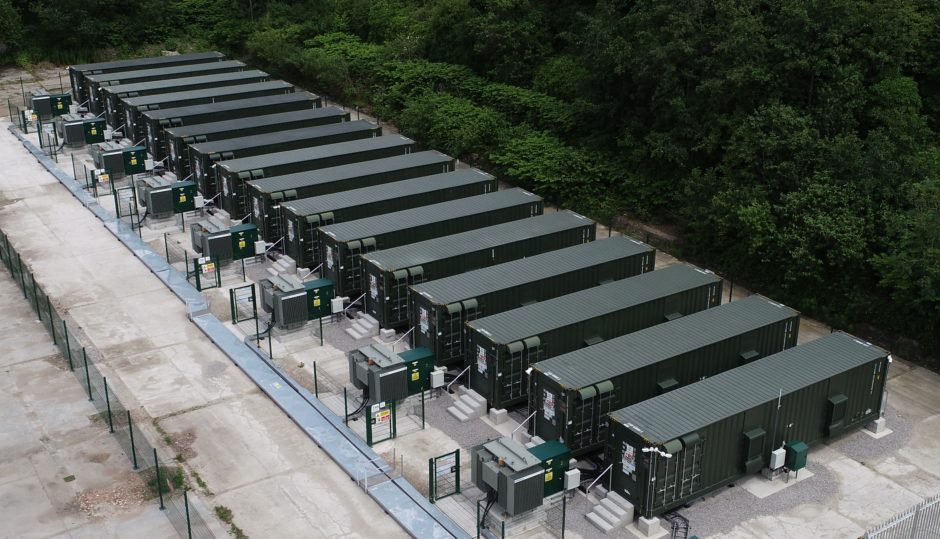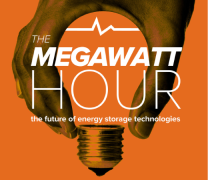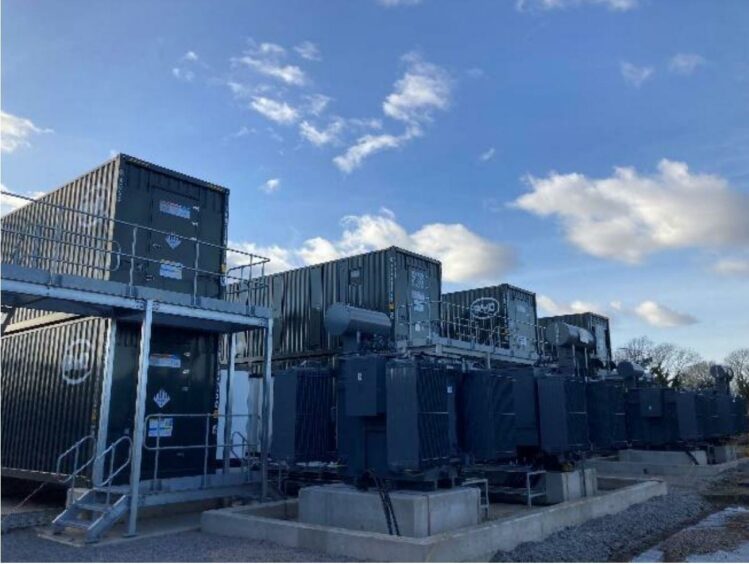
The Megawatt Hour is the latest podcast boxset brought to you by Energy Voice Out Loud in paid partnership with BDO. This new monthly series will examine how energy storage technologies are reshaping, reinforcing and recharging energy markets in the UK and around the globe.
In this second episode of our series, content editor Andrew Dykes is joined by co-host David Bevan, corporate finance partner at BDO, and by Ben Guest, managing director and head of the New Energy division at alternative asset management group Gresham House.
This month our hosts tackle perhaps the largest and liveliest area of the sector today – battery storage.
In less than a decade the UK has moved from having no large-scale battery capacity to more than 1.6GW in operation. The discussion includes a look at what’s driving that growth, the hurdles faced by the sector, and importantly what opportunities may lie ahead.
Why li-ion?
In addition to covering some of the basics of how batteries work – from charging and power rates to efficiency, life cycle and energy density – Mr Guest began by explaining why lithium-ion chemistries have become the dominant technology for large-scale battery storage. (It is not – as Mr Bevan asked – as simple as a VHS vs Betamax battle for market share.)
Lithium-ion batteries have largely triumphed over rival chemistries such as lead-acid or nickel-cadmium as a result of their favourable combination of the above characteristics.
“On round trip efficiency, on energy density, on power and manufacturability -it really just beats the others,” Mr Guest noted.
Moreover, within the overarching umbrella of lithium-ion there are also three main formulations – nickel manganese cobalt, lithium iron phosphate and lithium cobalt batteries. Again each has various strengths and weaknesses depending on application, “So essentially you can manufacture and optimise the characteristics of a battery to suit your purpose,” Mr Guest continued.
What does a battery storage project look like?
Physically battery storage projects aren’t much to look at. Mr Bevan noted that a typical footprint tended to resemble a “small, very nicely ordered trailer park with lots of freight containers full of batteries” and which also house inverters, grid connection equipment and safety and management systems.
Crucially – and unlike many other energy assets – these sites can absorb electricity as well as dispatch it, making batteries crucial to delivering flexibility as well as pure storage capacity as the grid becomes more reliant on renewables.
“It’s quite useful to think of it in terms of water,” added Mr Guest. “The grid connection could be a tap you keep it on most of the time. In this case, it can actually flow in both directions because it’s a battery – that’s a crucial difference versus a renewable project, which would be generating electricity and sending it only out.”
Gresham currently has 17 such fully operational projects, and aims to have around 25 by the end of the year – with more to follow out to 2024.
He noted that individual projects are also getting larger as more are built out, meaning the fund’s portfolio will nearly double in capacity from 425MW to about 840MW by the year – before doubling again to around 1,600MW by mid-2024.
Site planning is important too, and will only become more so in future as the market is likely to be reformed to reflect the distance between a generation asset and the point of consumption.
“That’s an important consideration for generation,” Mr Guest added. “But it will also mean that batteries are valued highly where they actually de-bottleneck the network and allow – especially cheaper renewable energy – to flow, rather than needing something to be turned off and alternatives to be sourced.”
“The way we deal with that is to think about where those constraints might exist today and become worse over time, but also just simply by diversifying,” he continued.
Battery storage operators usually then sell power, usually via third-party asset optimisers, to generate revenue either from frequency response, the balancing mechanism or on the wholesale market.
Energy storage and REpowerEU
Mr Bevan also drew attention to a letter, co-authored by storage developer Fluence Energy (NASDAQ: FLNC), and signed by Mr Guest of Gresham, which called for an “urgent” rethink the structure of European energy markets to support storage and, in turn, cleaner power on the grid as the bloc embarks on the REpowerEU programme to reduce gas use and build out more renewables.
He said the letter, which recommends adequate targets and policy frameworks for the deployment of energy storage and other flexibility technologies, also helped draw attention to some of the regulatory and market challenges faced by developers, particularly around areas such as grid connections.
Mr Guest said batteries were still generally treated as a source of energy supply rather than a flexible asset that can both dispatch and absorb power – particularly important when the grid may be oversupplied by renewables depending on wider demand.
Asked whether the recent Review of Electricity Market Arrangements (REMA) consultation launched by the UK government would help resolve some of these issues, Mr Guest said: “I do think the UK is forward-looking in general in this area…[but] I don’t think it will address the points we’ve raised.”
He did however believe that one crucial advantage battery storage operators have had in the UK is exemptions from some grid charges that are typically borne by other forms of clean energy generation.
“Exempting batteries from some types of system charges has unlocked the business model in the UK and levelled the playing field with other alternative energy sources,” he said.
“Exempting batteries, which are effectively providing flexibility, from those sorts of charges is what’s happened in the UK and that’s really unlocked the business model for batteries… Doing that in GB has really, helped and we need to see that happen everywhere.”
“That and putting back basically putting batteries on a level playing field with any alternative source of flexibility – that’s a crucial point.”
UK battery storage progress
The importance of storage has investors interested too, Mr Bevan affirmed. “We’ve now got at least three listed funds that are totally devoted to utility scale battery storage in the UK,” he noted, alongside a number of private funds and corporates
“As renewables penetration increases, you need storage – so if you put those two together it feels like a quite a simple investment decision,” he said.
That is reflected in Gresham’s recent experience too. Mr Guest recalled taking “well over 100 meetings” to finalise its IPO in 2018 over several months, but has taken “just days” to raise similar amounts more recently.
Moreover, he is buoyed by the UK’s clean energy progress, having reached a 45% renewable electricity generation in Q1 2022. “Most markets aren’t quite at that level yet but it’s moving forwards pretty quickly,” he said, adding that “there’s even more of an imperative duty for energy security reasons.”
At the same time, electricity consumption will grow even further as petrol and gas use shrink in transportation and heating decline. “That means the importance of electricity will grow and within that renewables are going to gain more and more share – so the electricity market is going to become broadly the energy market.”
That equates to immense potential for groups like Gresham, not just in the UK but globally, as more countries follow similar trajectories on a path to cut emissions.

 © Supplied by Voltalia
© Supplied by Voltalia







